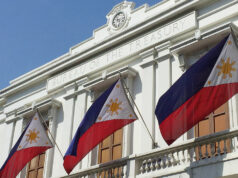By Mark T. Amoguis, Researcher
YIELDS on government securities (GS) went up last week due to a rate hike in the United States as well as expectations on the outcome of overseas central banks’ policy meetings.
As of June 14, prices went down as GS yields increased by an average of 14.76 basis points (bps) week on week, according to data from the Philippine Dealing and Exchange Corp.
Carlyn Therese X. Dulay, head of institutional sales at Security Bank Corp., said last week’s increase in government bond yields was caused by the “US rate hike, the weaker peso, the development of US import tariffs in China, and ahead of policy data of the ECB (European Central Bank) [last Thursday], and the Bangko Sentral ng Pilipinas (BSP) mid [this] week.”
Guian Angelo S. Dumalagan, market economist at Land Bank of the Philippines (LANDBANK), concurred, saying “GS yields rose [last] week, as expected, due to upbeat US inflation data and the subsequent upward revision in the US Federal Reserve’s projected path of interest rate normalization.”
Although widely expected, Mr. Dumalagan said “the change in its rate forecast this year from three rate hikes to four rate hikes surprised some market participants, especially since US policy makers shared mixed views about the need for more aggressive moves ahead.”
“Expectations of an early announcement from the ECB (European Central Bank) of a timeline for the tapering of its bond-buying program also pushed yields higher,” Mr. Dumalagan said.
A bond trader interviewed last week said the “market was affected by expectations for hawkish major central banks with the Fed and ECB (and Bank of Japan) meeting [last] week.”
“Hawkish commentary from the BSP governor also pushed yields higher,” the bond trader said.
As widely expected, the Federal Open Market Committee — the rate-setting body of the US central bank — raised last Wednesday its benchmark overnight lending rate by a quarter of a percentage point, to a range of 1.75% to 2%.
The US central bank also said it expects to implement two more rate hikes this year, up from one previously. It also sees three more rate increases next year.
Meanwhile, the ECB decided on Thursday to keep its rates on hold but plans to cut its bond buying program to €15 billion between October and December before shutting it at the end of this year.
Bucking the worldwide trend of tightening monetary policies, the Bank of Japan maintained last Friday its key rate at -0.1% and its 80-trillion-yen asset purchase program, as well as capping its 10-year bond yields at around zero.
Back home, the BSP scheduled its policy meeting a day earlier on Wednesday, with the BSP Governor Nestor A. Espenilla, Jr. describing this adjustment as “logistical” due to tight schedules of central bank officials.
BSP’s policy-making body Monetary Board will discuss a “fairly complex” mix of faster inflation, a weakening peso, and robust economic growth.
The central bank, for the first time in nearly four years, raised its rates by a quarter of a percentage point to range from 2.75% to 3.75% last month in response to continued increase of prices of widely used goods, with five-month inflation now clocking at 4.1%, breaching the 2-4% target.
The peso, on the other hand, sank to P53.27 against the dollar on Thursday, a fresh 12-year low.
Security Bank’s Ms. Dulay added that “market participants had fewer axes due to the settlement of the newly issued RTB 3-09,” referring to the P121.8-billion three-year retail Treasury bonds (RTBs) which was offered from May 30 to June 8.
The trader agreed, saying “bond traders were also wary about the RTB settlement and fresh supply in the coming week.”
The Bureau of the Treasury will auction off P15 billion worth of Treasury bills (T-bills) today and reissuing 20-year Treasury bond (T-bond) with a remaining life of 19 years and eight months worth P10 billion on Tuesday.
Local markets were closed on Tuesday and Friday for the Independence Day and Eid’l Fitr holidays, respectively.
At the secondary market last Thursday, GS yields rose across the board.
At the short end of the yield curve, rates of 91-, 182-, and 364-day T-bills went up by 3.79 bps, 3.97 bps, and 11.04 bps, respectively, to fetch 3.3059%, 3.6613%, and 4.2891%.
The belly saw yields on two-, three-, four-, five-, and seven-year T-bonds also increase by 16.11 bps (4.6099%), 16.84 bps (4.9599%), 19.82 bps (5.6196%), 23.19 bps (5.9339%), and 20.33 bps (5.9833%), respectively.
Likewise, the long end climbed, with yields on 10- and 20-year papers inching up by 12.17 bps (6.2%) and 20.36 bps (7.2893%), respectively.
For this week, market players will take their cues from the upcoming BSP meeting, analysts said.
“Expect yields to continue to inch upward as market expects a rate hike from the BSP [on] Wednesday,” Security Bank’s Ms. Dulay said.
The bond trader agreed, saying “traders will take their cue from the upcoming BSP meeting, with analysts indicating that the BSP remains behind the curve and the peso drops to a 12-year low.”
For LANDBANK’s Mr. Dumalagan, GS yields “might move sideways amid likely mixed developments in area of monetary policy.”
“However, if the BSP hike rates again on June 20, contrary to the views of some market participants, we could see GS yields increase again [this] week,” he said.



